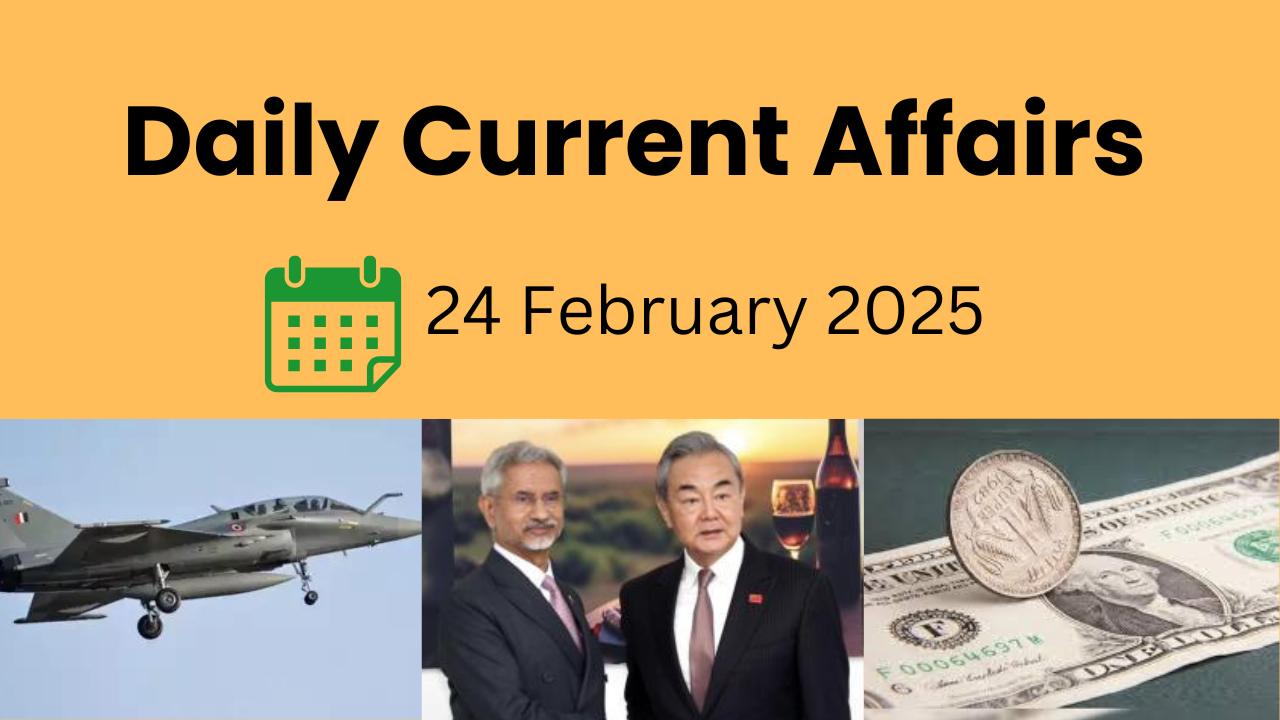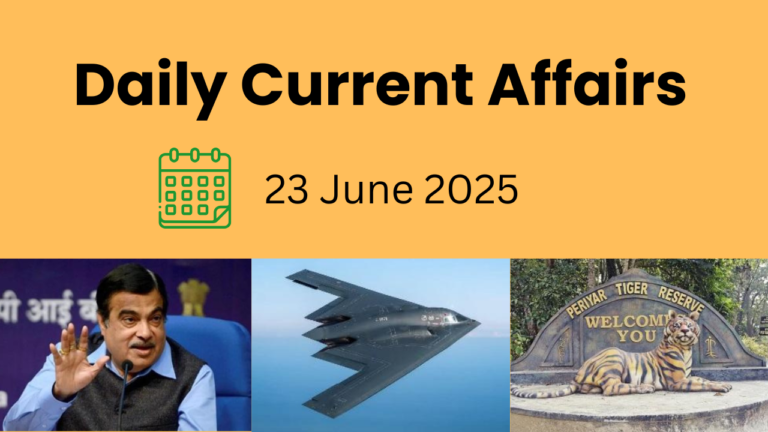1. Incorporating Sexual Equality into School Curriculums
Context: The Supreme Court has recently emphasized the need to include sexual equality in school syllabuses. Alongside moral and ethical training, students should be educated on respectful behavior towards women, fostering a more equitable and just society.
Why is Sexual Equality Important?
Breaking Patriarchal Norms:
- India continues to struggle with deep-rooted gender biases that restrict opportunities for women across various sectors.
Boosting Economic Growth:
- The gender gap in education and employment negatively impacts economic development.
Bridging Educational Disparities:
- According to NFHS-5, while 70.3% of females are literate, the literacy rate among males is 84.7%, highlighting the urgent need for gender-inclusive education.
Encouraging Women’s Workforce Participation:
- Only 37% of Indian women (aged 15 and above) participate in the labor force, compared to 73% of men, showing a stark imbalance in employment opportunities.
Upholding Constitutional Rights:
Articles 14, 15, and 21 of the Indian Constitution guarantee gender equality, and embedding it in education aligns with these fundamental rights.
Preventing Gender-Based Violence:
- Early education on gender equality can help curb harassment, discrimination, and violence against women, fostering a safer and more inclusive society.
Challenges to Achieving Sexual Equality:
Traditional Patriarchal Mindset:
- Societal norms and cultural biases continue to reinforce gender stereotypes, limiting opportunities for women.
Gaps in Gender-Sensitive Education:
- Many schools lack gender-inclusive curricula and teacher training, making it difficult to impart effective gender equality education.
Workplace Inequalities:
Women still face pay gaps, lack of leadership representation, and gendered career restrictions, hampering their professional growth.
Rising Cases of Gender-Based Violence:
- Despite legal protections, sexual harassment, domestic abuse, and crimes against women remain widespread concerns.
Influence of Digital Media:
The objectification of women in media and the surge in cyber abuse contribute to gender discrimination and reinforce harmful stereotypes.
Global Efforts Toward Gender Equality:
United Nations Sustainable Development Goal 5:
- Aims to achieve gender equality and empower all women and girls globally.
Beijing Declaration and Platform for Action (1995):
- An international commitment by the United Nations to promote gender equality and women’s rights.
- Convention on the Elimination of All Forms of Discrimination Against Women (CEDAW)
- Encourages governments worldwide to adopt legal protections and policy reforms against gender-based discrimination.
India’s Initiatives to Promote Gender Equality:
Beti Bachao Beti Padhao (BBBP):
- Encourages the education and empowerment of the girl child to challenge gender biases.
National Education Policy (NEP) 2020:
- Recognizes gender inclusion as a top priority and promotes gender sensitization programs.
Nirbhaya Fund:
- Supports safety and security initiatives aimed at protecting women from violence.
Digital Literacy Program for Women:
A part of Pradhan Mantri Gramin Digital Saksharta Abhiyan (PMGDISHA), this initiative helps women access e-governance services and participate in the digital economy.
One Stop Centre Scheme (Sakhi Centres):
- Provides comprehensive support for women facing violence, including police assistance, medical aid, legal counseling, psycho-social support, and temporary shelter.
Final Thoughts:
Integrating sexual equality education into school curricula is a powerful step toward social progress. A well-structured, gender-sensitization program can transform mindsets, leading India toward a more inclusive, equitable, and respectful society.
2. India and China’s Efforts to Strengthen the G20 Amid Global Challenges
Context: India’s External Affairs Minister highlighted the collaborative efforts of India and China in safeguarding the integrity of the G20, despite increasing global polarization.
Key Discussions Between India and China:
- Bilateral Relations: Both nations discussed various issues, including developments along the Line of Actual Control (LAC).
- Resumption of the Kailash Mansarovar Pilgrimage: Talks were held on reviving this significant religious journey.
- Trans-Border River Talks: Discussions focused on water-sharing and management between the two countries.
- Enhanced Connectivity: Improving flight operations and easing travel restrictions were also on the agenda.
Origins and Evolution of the G20:
- Established in 1999 in response to the Asian financial crisis (1997-1998) as an informal forum for Finance Ministers and Central Bank Governors.
- Initially focused on macroeconomic policies, but later expanded to cover trade, climate change, health, agriculture, energy, and anti-corruption.
- Membership: Consists of 19 countries—Argentina, Australia, Brazil, Canada, China, France, Germany, India, Indonesia, Italy, Japan, South Korea, Mexico, Russia, Saudi Arabia, South Africa, Turkey, UK, and the US—along with two regional organizations, the European Union (EU) and the African Union (AU).
- Presidency Rotation: The G20 does not have a permanent secretariat; instead, the presidency rotates annually among member nations.
Interesting Facts About G20:
- The G20 unites the world’s largest economies, facilitating discussions on economic, political, and social issues.
- Before the African Union (AU) joined, the G20 accounted for 85% of global GDP, 75% of global trade, and two-thirds of the world’s population.
India’s Role in the G20:
- G20 Leadership in 2023: India showcased its ability to foster global consensus through the Leaders’ Declaration.
- Inclusivity at the Core: India ensured that public concerns were represented through 11 Engagement Groups, including youth, women, the private sector, and civil society.
- Commitment to Sustainable Development: India prioritized Sustainable Development Goal 1 (SDG 1) – “No Poverty”, aligning with global development objectives.
- Voice of the Global South: India represented developing nations, advocating for their interests and challenges on a global platform.
Why G20 Matters for India:
- Economic Strength: India’s diverse and growing economy positions it as a key contributor to global policymaking.
- Foreign Investments: The G20 forum enhances India’s ability to attract investments, fostering job creation, technological advancements, and infrastructure growth.
- Inclusive Growth: India’s leadership in the G20 aims to deliver tangible benefits, including higher investments, employment opportunities, and poverty alleviation.
Challenges India Faces in G20 Leadership:
- Navigating Global Tensions: Balancing relations between major powers like the US, China, and Russia is a complex challenge.
- Sustainability vs. Growth: India’s industrialization must align with its climate commitments, requiring strategic planning.
- Developed vs. Developing Nations: Bridging the divide between advanced economies and emerging markets remains a key hurdle.
The Road Ahead for India:
India’s participation in the G20 strengthens its global standing and enhances its leadership in international affairs. Despite existing challenges, India’s active role offers immense opportunities to drive global change, accelerate economic growth, and champion the interests of developing nations.
As India rises on the global stage, its leadership in the G20 will bring widespread benefits to citizens, farmers, workers, and the middle class, ensuring inclusive and sustainable prosperity for all.
3. Indian Army Boosts Air Defence to Counter Drone and Aerial Threats
Context: With the increasing use of drones and evolving security threats, the Indian Army is taking major steps to strengthen its air defence systems. Low-flying aircraft and unmanned aerial vehicles (UAVs) pose new challenges that demand advanced defence solutions.
Key Developments in Air Defence:
- Contract for Quick Reaction Surface to Air Missile (QRSAM): Expected to be finalized within 4-5 months, this indigenously developed missile system by DRDO has a 30 km range and is a top priority for the Army.
- Upgrades in Akash Surface-to-Air Missiles (SAM):
- Three regiments of Akash SAM are already in service.
- Two regiments of the enhanced Akash-NG have been contracted.
- New prototypes for trials are expected within 45 days.
- Drone Warfare Challenges: Lessons from the Ukraine war have demonstrated the increasing role of drones in modern combat, making air defence adaptation crucial.
Understanding Drones and Their Military Applications:
Drones, also known as Unmanned Aerial Vehicles (UAVs), are pilotless aircraft used for various applications, from military missions to civilian operations.
Military Uses of Drones:
- Surveillance & Reconnaissance: Used for intelligence gathering without endangering human pilots.
- Precision Strikes: Armed drones like the MQ-9 Reaper can carry missiles and conduct targeted airstrikes.
- Real-time Battlefield Intelligence: Advanced sensors provide live combat updates.
- Psychological Warfare: Continuous UAV surveillance can create fear and deterrence.
- Logistics & Resupply: Used to deliver supplies to troops in remote areas.
- Law Enforcement & Border Security: Assist in crowd monitoring, surveillance, and rescue operations.
Why India Needs Stronger Aerial Defence:
- Rising Drone Intrusions: Adversaries have used drones to drop weapons and conduct surveillance along India’s borders.
- Threats to Critical Installations: UAVs have been detected near military bases and vital infrastructures, raising concerns about potential attacks.
- Enhanced Warfare Tactics: Drones equipped with loitering munitions, spy cameras, and disruptive technology present new security risks.
- Espionage & Smuggling: Civilian drones are increasingly misused for spying, smuggling, and unauthorized surveillance.
India’s Strategy to Strengthen Air Defence:
- Advanced Defence Systems:
- Deployment of Quick Reaction Surface to Air Missile (QRSAM) and smart ammunition.
- Counter-drone systems and modern anti-aircraft weapons are being introduced.
- Technological Innovations:
- Development of radar systems and anti-drone weaponry to detect, track, and neutralize aerial threats.
- Regulatory Measures:
- Civil Aviation Requirements (CAR) for drone operations.
- Drone (Amendment) Rules 2023, effective from September 27, 2023, aims to liberalize and expand drone usage while ensuring security.
- Indigenous Defence Technology:
- DRDO and Indian defence agencies are working on homegrown solutions to tackle drone threats.
- Focus on developing missile systems, electronic warfare tools, and AI-driven counter-drone technologies.
Conclusion:
Drones have revolutionized warfare and civilian industries, but they also pose significant security risks. As aerial threats evolve, India is taking decisive steps to fortify its air defence systems with cutting-edge technology, strategic policies, and indigenous innovations. Strengthening drone countermeasures will be crucial for safeguarding national security and critical assets in the future.
4. I&B Ministry Issues Advisory on ‘Obscene Content’ in Digital Media
Context: The Ministry of Information & Broadcasting (I&B) has issued an advisory to OTT platforms and social media following complaints about the spread of obscene, vulgar, and pornographic content online.
Understanding OTT Platforms:
Over-the-Top (OTT) platforms deliver movies, TV shows, and other video content directly through the internet, bypassing traditional cable or satellite networks. These platforms have gained immense popularity but have also sparked concerns over unregulated content.
Key Highlights of the Advisory:
The I&B Ministry has directed OTT platforms to strictly follow the Code of Ethics under the IT Rules, 2021, ensuring age-based classification and content restrictions.
The advisory cites multiple laws governing online content, including:
- Indecent Representation of Women Act, 1986
- Bharatiya Nyay Sanhita (BNS), 2023
- POCSO Act
- IT Act, 2000
Grievance Redressal Mechanism under IT Rules, 2021:
The IT Rules, 2021, have a three-tier mechanism to handle complaints regarding OTT content and digital news:
- Level I: Self-Regulation by Publishers
- Platforms must appoint a Grievance Officer to resolve complaints within 15 days.
- Content must comply with the Code of Ethics and age-based classification.
- Level II: Oversight by Self-Regulatory Bodies (SRBs)
- SRBs monitor publisher actions and review complaints.
- They must be registered with the I&B Ministry.
- Level III: Government Oversight
- The I&B Ministry can issue warnings, advisories, or take action against violations.
- A Grievance Appellate Committee (GAC) reviews unresolved complaints.
Challenges in Regulating OTT Content:
Despite the new regulatory framework, several challenges remain:
- Balancing Freedom of Expression and Regulation
- Article 19 of the Indian Constitution guarantees freedom of speech, but restrictions exist for morality and decency.
- Overregulation may stifle creativity and lead to self-censorship.
- Subjective Interpretation of Content
- Different audiences perceive offensive content differently, leading to inconsistent rulings.
- Global Jurisdiction Issues:
- International OTT platforms struggle to align their policies with Indian content regulations.
- Fear of Government Overreach:
- Ambiguity in content restrictions raises concerns about political bias and censorship.
- AI-Based Moderation Challenges:
- Automated systems may misinterpret cultural sensitivities, leading to unfair content removals.
Laws Governing Obscene Content Online:
Several laws govern online content and obscenity, imposing strict penalties for violations:
- Section 294 of Bharatiya Nyaya Sanhita (BNS), 2023:
- Penalizes selling, importing, exporting, advertising, or profiting from obscene content (including digital material).
- The content must be lascivious or excessively sexual to be deemed illegal.
- Section 67 of the IT Act, 2000:
- Publishing or transmitting obscene material electronically is punishable with up to 3 years of imprisonment and a 5 lakh fine for first-time offenders.
- Indecent Representation of Women Act, 1986:
- Prohibits depiction of women in an indecent manner.
- IT Rules, 2021:
- Mandates a Code of Ethics for OTT platforms.
- Introduces age-based content classification and access control for adult-rated material.
- POCSO Act:
- Aims to protect children from exposure to sexual content and online exploitation.
Supreme Court’s Observations on Obscenity:
The Supreme Court of India has set important legal precedents regarding obscenity in digital content:
- Ranjit D. Udeshi v. State of Maharashtra (1964):
- Applied the Hicklin Test, defining obscenity as content that corrupts or depraves susceptible minds.
- Aveek Sarkar v. State of West Bengal (2014):
- Replaced the Hicklin Test with the Community Standards Test, considering societal norms while evaluating obscenity claims.
- March 2024: SC Ruling on OTT Content:
- Quashed proceedings against “College Romance” creators, ruling that use of profanity alone does not constitute obscenity.
- Reinforced that content is deemed obscene only if it actively arouses sexual thoughts.
Conclusion: The OTT revolution has transformed digital entertainment, but it has also sparked debates on content regulation. The I&B Ministry’s advisory seeks to ensure responsible content creation without infringing on freedom of expression. However, striking a balance between creative liberty and content restrictions remains an ongoing challenge.
5. RBI’s $10 Billion USD-INR Swap Auction: Impact on Liquidity & Rupee Stability
Context: The Reserve Bank of India (RBI) is set to conduct its largest-ever $10 billion USD-INR buy-sell swap auction to tackle the ongoing liquidity crunch in the banking sector. This move is expected to stabilize the rupee and ensure smooth currency flow in the financial system.
What is a USD-INR Buy-Sell Swap Auction?
A Dollar/Rupee Buy-Sell Swap Auction is a tool used by the RBI to manage liquidity in the financial system. It involves a two-step process:
- First Leg – The RBI purchases U.S. Dollars from banks in exchange for Indian Rupees.
- Reverse Leg – On a pre-agreed date, the RBI sells back the dollars to the banks at a predetermined rate along with a swap premium.
Why is the RBI Conducting this Swap Auction?
- Liquidity Management – Helps inject or absorb rupee liquidity in the banking system.
- Exchange Rate Stability – Reduces volatility in the USD/INR market by balancing dollar supply.
- Forex Reserve Optimization – Ensures efficient use of foreign exchange reserves.
- Impact on Inflation & Interest Rates – Regulates money supply, indirectly affecting inflation and borrowing costs.
Benefits of the USD-INR Swap:
- Boosts Market Liquidity – Ensures sufficient funds for banks, supporting credit flow.
- Strengthens the Rupee – Reduces pressure on the currency during forex outflows.
- Predictability for Banks – Helps banks manage their forex positions and liquidity planning.
- Prevents Excessive Volatility – Controls sharp fluctuations in currency values, enhancing investor confidence.
Challenges & Risks:
- Impact on Forex Reserves – A large-scale swap could reduce foreign exchange reserves.
- Global Uncertainties – Effectiveness depends on global market conditions and capital flows.
- Market Speculation – If not executed strategically, it may trigger unwanted currency speculation.
- Temporary Relief – While useful for liquidity, it is not a long-term solution for structural financial challenges.
RBI’s $10 Billion Swap Auction: Key Details:
- Auction Date – February 28, 2025
- Spot Settlement Date – March 4, 2025
- Far-Leg Settlement Date – March 6, 2028
- Expected USD-INR Rate Movement – May approach 86.30
This auction aims to stabilize the rupee and absorb foreign exchange pressures, particularly amid global economic fluctuations.
How the Swap Mechanism Works:
- First Phase (Spot Leg) – Banks sell USD to the RBI at the FBIL Reference Rate and receive rupee liquidity in their accounts.
- FBIL (Financial Benchmarks India Private Limited) Reference Rate is the official benchmark for forex rates in India.
- Final Phase (Reverse Leg) – After three years, banks buy back USD from the RBI by returning rupees with an agreed swap premium.
Conclusion:
The RBI’s $10 billion swap auction is a strategic move to enhance liquidity, strengthen the rupee, and maintain exchange rate stability. While it offers short-term relief, India’s financial system must also focus on long-term reforms to ensure sustained stability in forex markets and banking liquidity.
6. Three-Language Policy Dispute: Tamil Nadu vs NEP 2020
Context: The Union Government has withheld 2,152 crore in Samagra Shiksha funds from Tamil Nadu due to the state’s refusal to implement the National Education Policy (NEP) 2020. While Tamil Nadu is open to the PM SHRI scheme, it firmly opposes the three-language formula, continuing to uphold its longstanding two-language policy.
The Centre insists on compliance, arguing for constitutional alignment, while Tamil Nadu has rejected the mandate, calling it an act of coercion and overreach.
Understanding the Three-Language Formula in NEP 2020:
What Does NEP 2020 Say About Languages?
The Three-Language Formula has been part of India’s education system since the 1968 NEP. However, unlike previous versions, NEP 2020 provides flexibility in language selection instead of mandating Hindi.
Key Features of the Language Policy in NEP 2020:
- State and Student Choice – Schools and students can choose their languages, with at least two being Indian languages.
- No Mandatory Hindi – Unlike previous policies, NEP 2020 does not enforce Hindi learning.
- Bilingual Education – The policy promotes teaching in the mother tongue or home language alongside English.
- Sanskrit as an Option – Sanskrit is emphasized but remains optional under the framework.
Tamil Nadu’s Strong Opposition:
Decades-Long Resistance to Hindi Imposition:
Tamil Nadu has consistently opposed any attempts to enforce Hindi. The resistance dates back to 1937, when the Justice Party opposed the introduction of compulsory Hindi in schools under Rajaji’s government. The policy was withdrawn after intense protests that led to the deaths of two activists, Thalamuthu and Natarajan.
1965 Anti-Hindi Agitation: A Turning Point:
In 1965, widespread protests erupted in Tamil Nadu against the move to make Hindi the sole official language. The unrest led to 70 deaths and was one of the most significant language-related agitations in Indian history.
The Dravidian Movement and the Two-Language Policy:
- In 1968, Chief Minister C.N. Annadurai led the DMK government in passing a resolution rejecting the three-language formula.
- Tamil Nadu officially adopted the two-language policy – Tamil and English – which has remained unchanged since.
- Successive governments, regardless of political affiliations, have firmly opposed Hindi instruction in state-run schools.
Recent Opposition & Policy Revisions:
- In 2019, Tamil Nadu’s opposition forced the Centre to remove the compulsory Hindi provision from the draft NEP 2020, originally proposed by the Kasturirangan Committee.
- The state continues to strongly resist any effort to introduce Hindi through national education policies.
Concerns Over Imposing Hindi:
Why Tamil Nadu Sees the Three-Language Policy as Hindi Imposition:
- Fear of Hindi Becoming the Default Third Language – Due to a shortage of teachers for other Indian languages, Hindi could become the default choice, even if it’s not mandatory.
- Centre’s Push for Hindi in Non-Hindi States – In 2019, the government allocated 50 crore to recruit Hindi teachers in non-Hindi-speaking states, reinforcing suspicions of linguistic favoritism.
- Neglect of South Indian Languages in North Indian Schools – While Hindi is promoted nationwide, there is no similar initiative to encourage Tamil, Telugu, Kannada, or Malayalam in North Indian schools or Kendriya Vidyalayas.
Finding a Middle Ground:
What’s the Best Way Forward?
Constructive Dialogue – A collaborative discussion between the Centre and Tamil Nadu is crucial to resolving the issue.
- Recognizing Tamil Nadu’s Success – The two-language policy has been effective in ensuring high enrolment rates and low dropout rates.
- Balancing Federalism and Education Policy – Education is in the Concurrent List, meaning both the Centre and States should work together instead of imposing policies unilaterally.
- Unlinking Educational Reforms from Funding – The Samagra Shiksha funds should not be used as a bargaining tool, as they are essential for quality education in the state.
Tamil Nadu remains unwavering in its stance on the two-language system, viewing the three-language formula as an unnecessary disruption. Instead of enforcing a one-size-fits-all policy, the Centre must engage in meaningful negotiations that respect regional linguistic identities while maintaining national educational goals.




